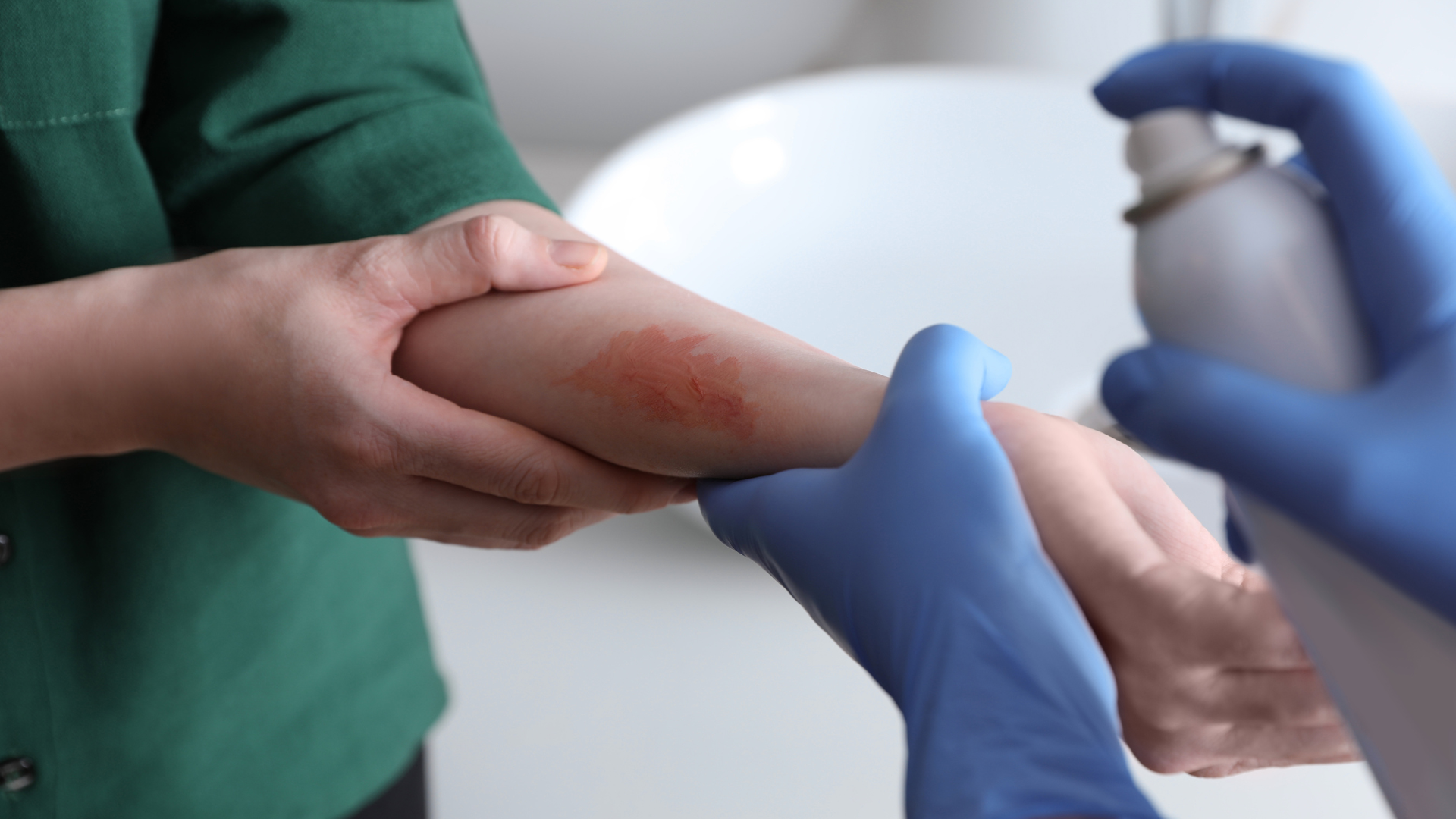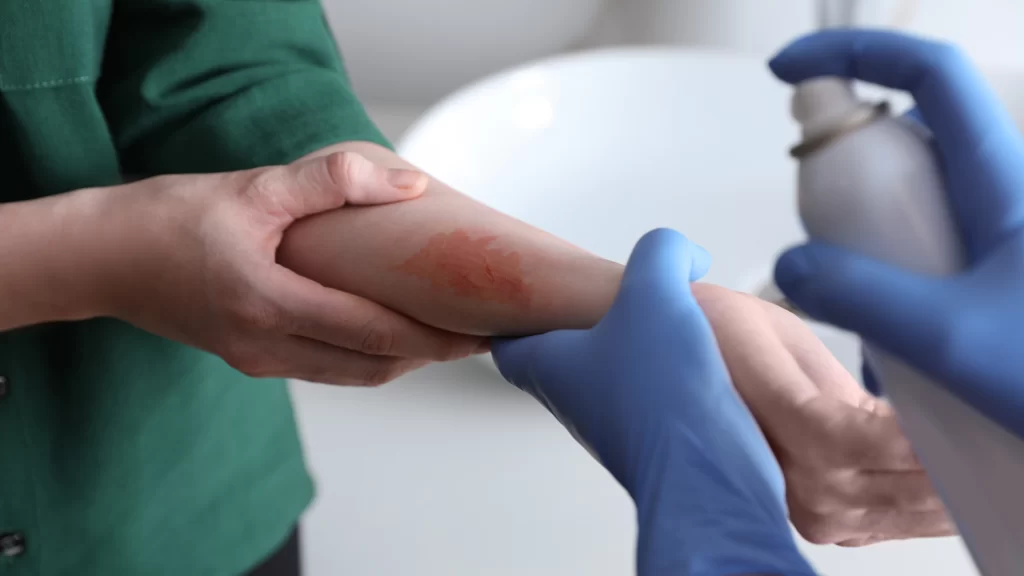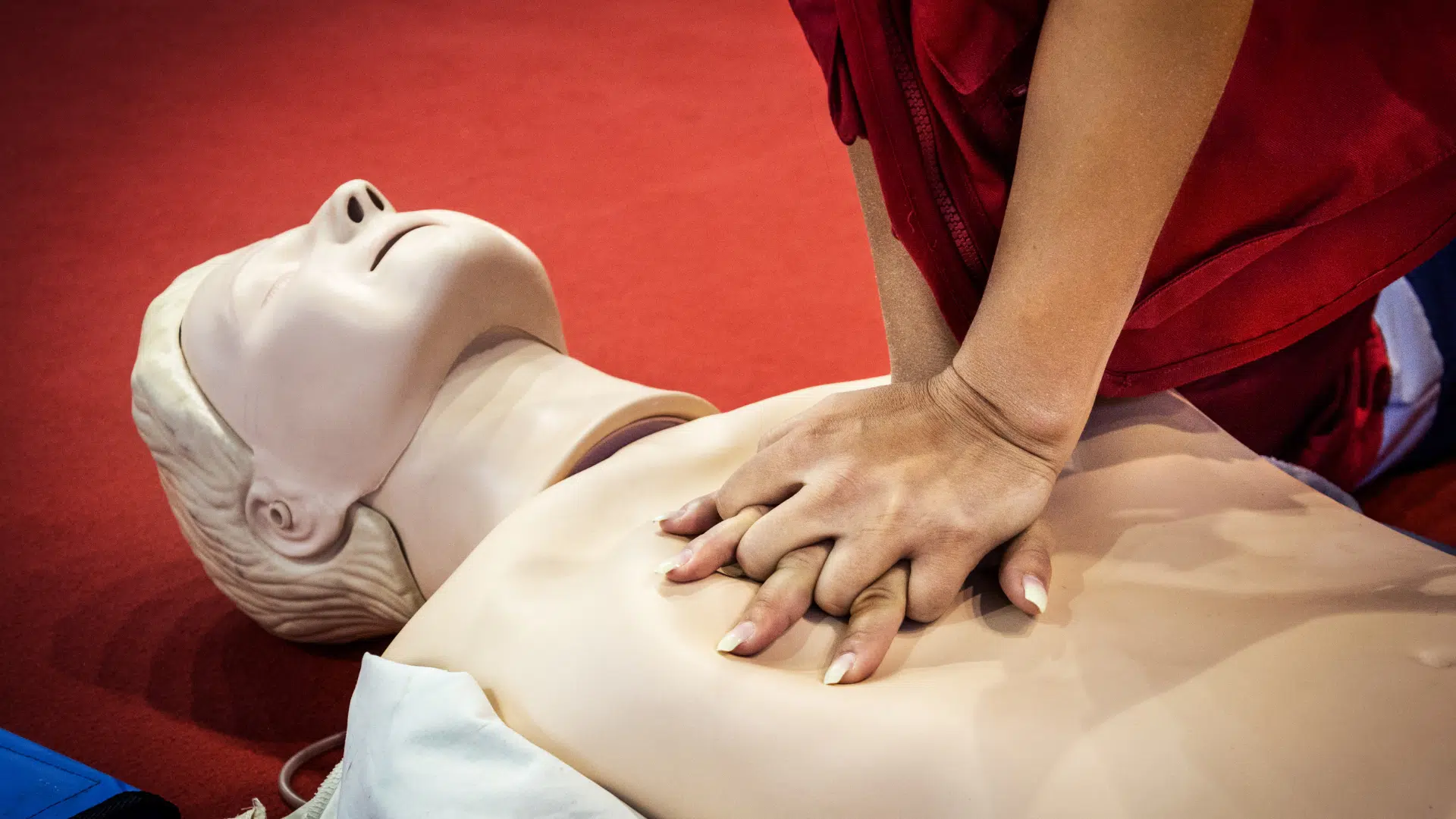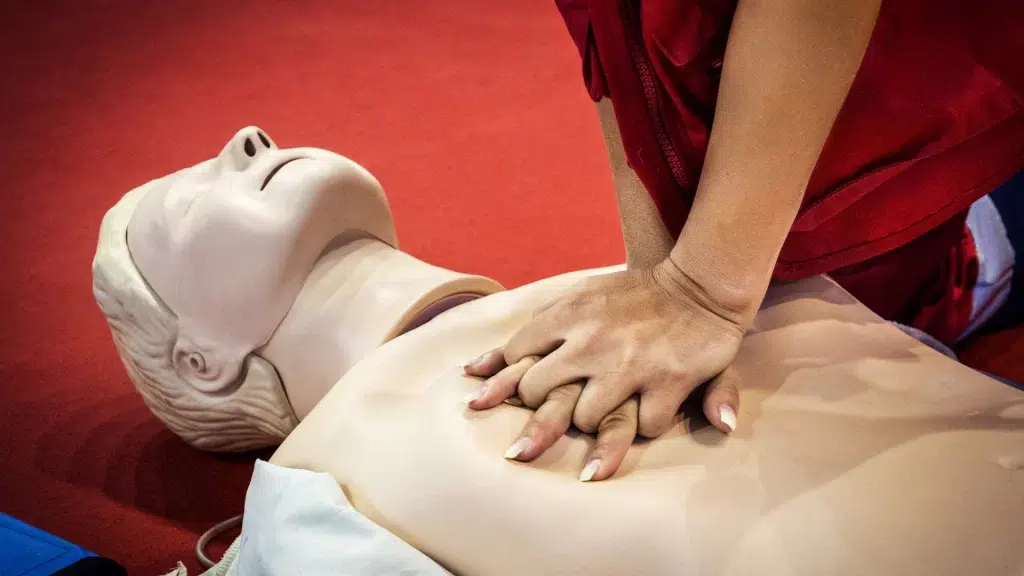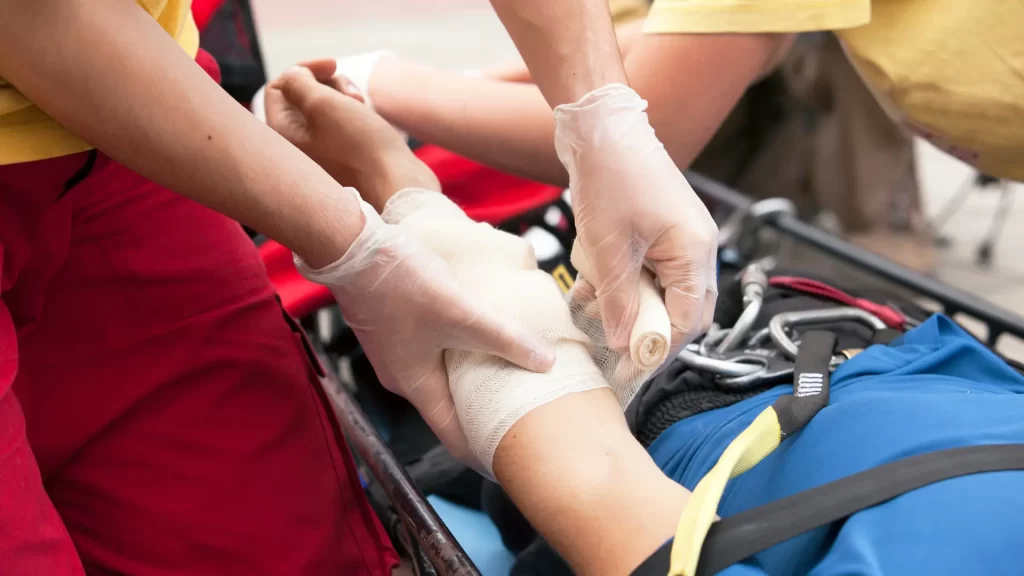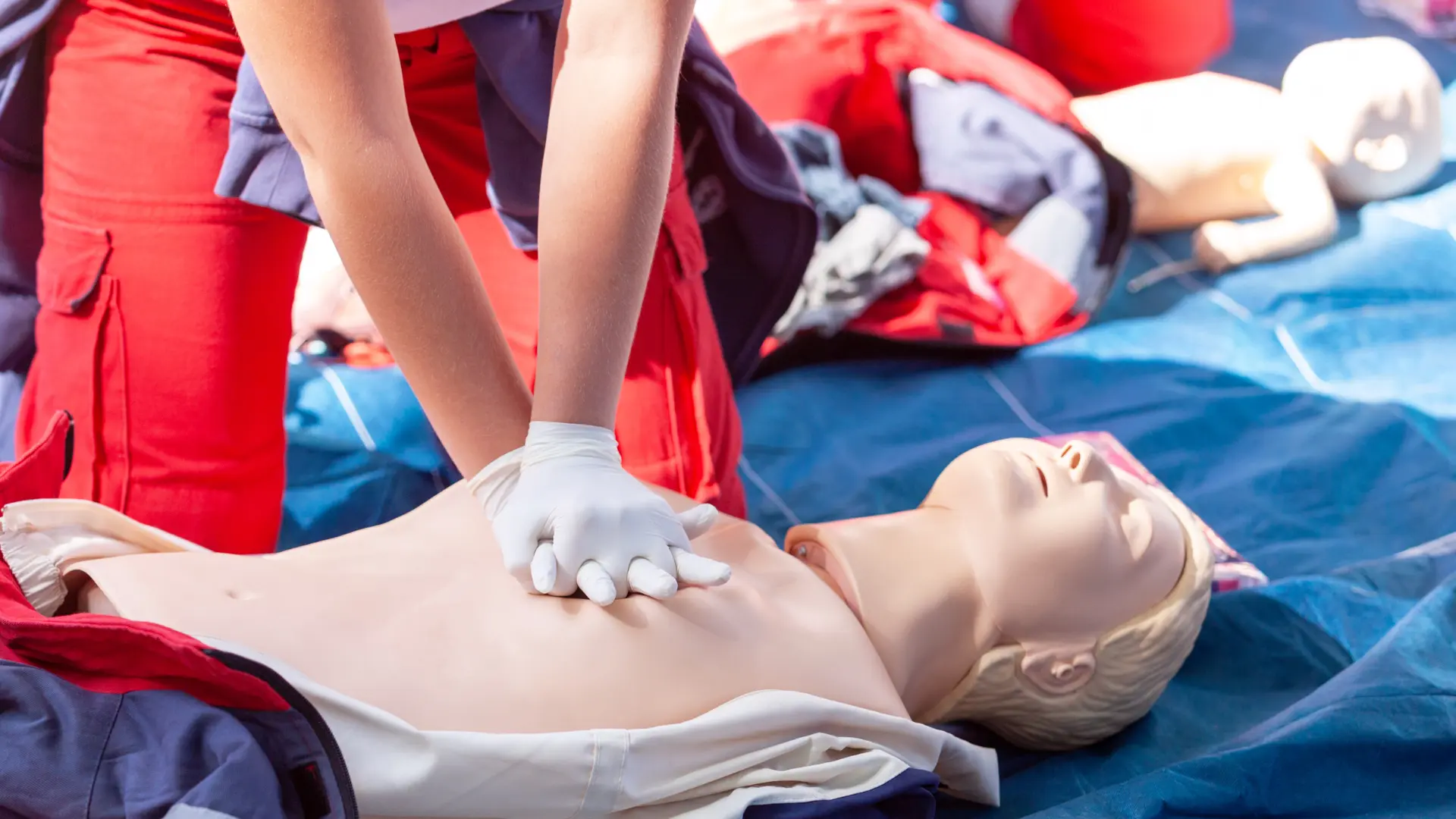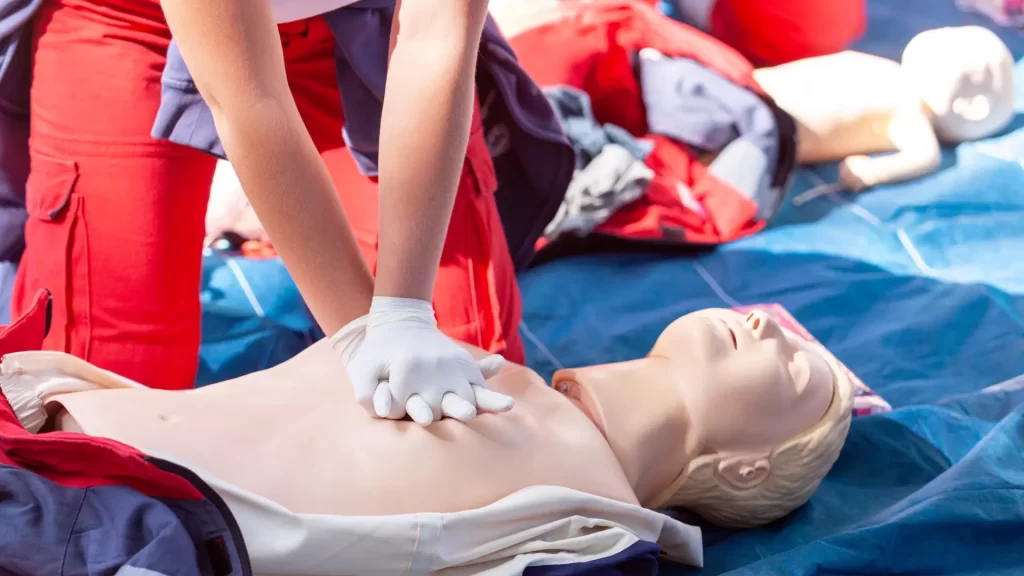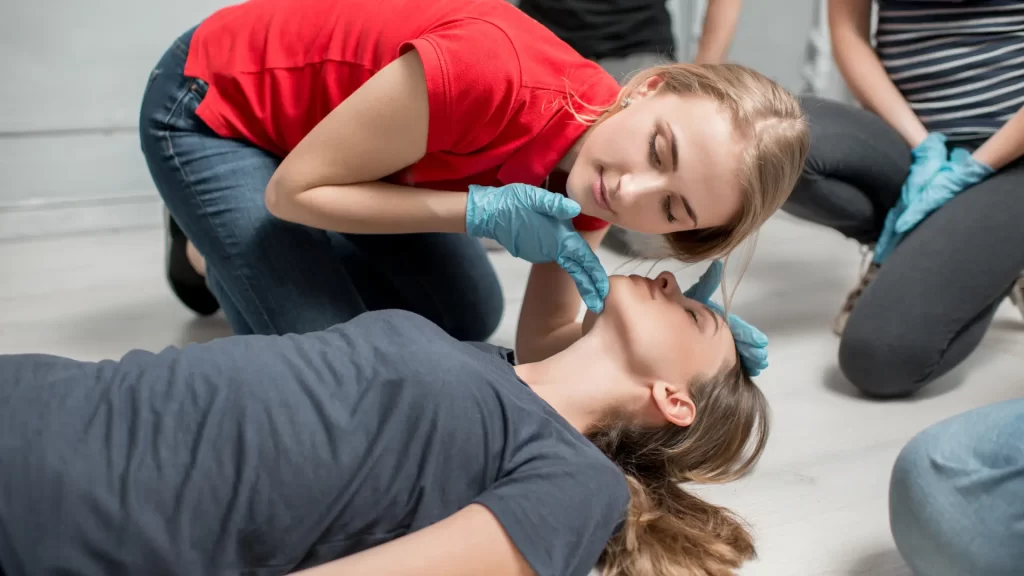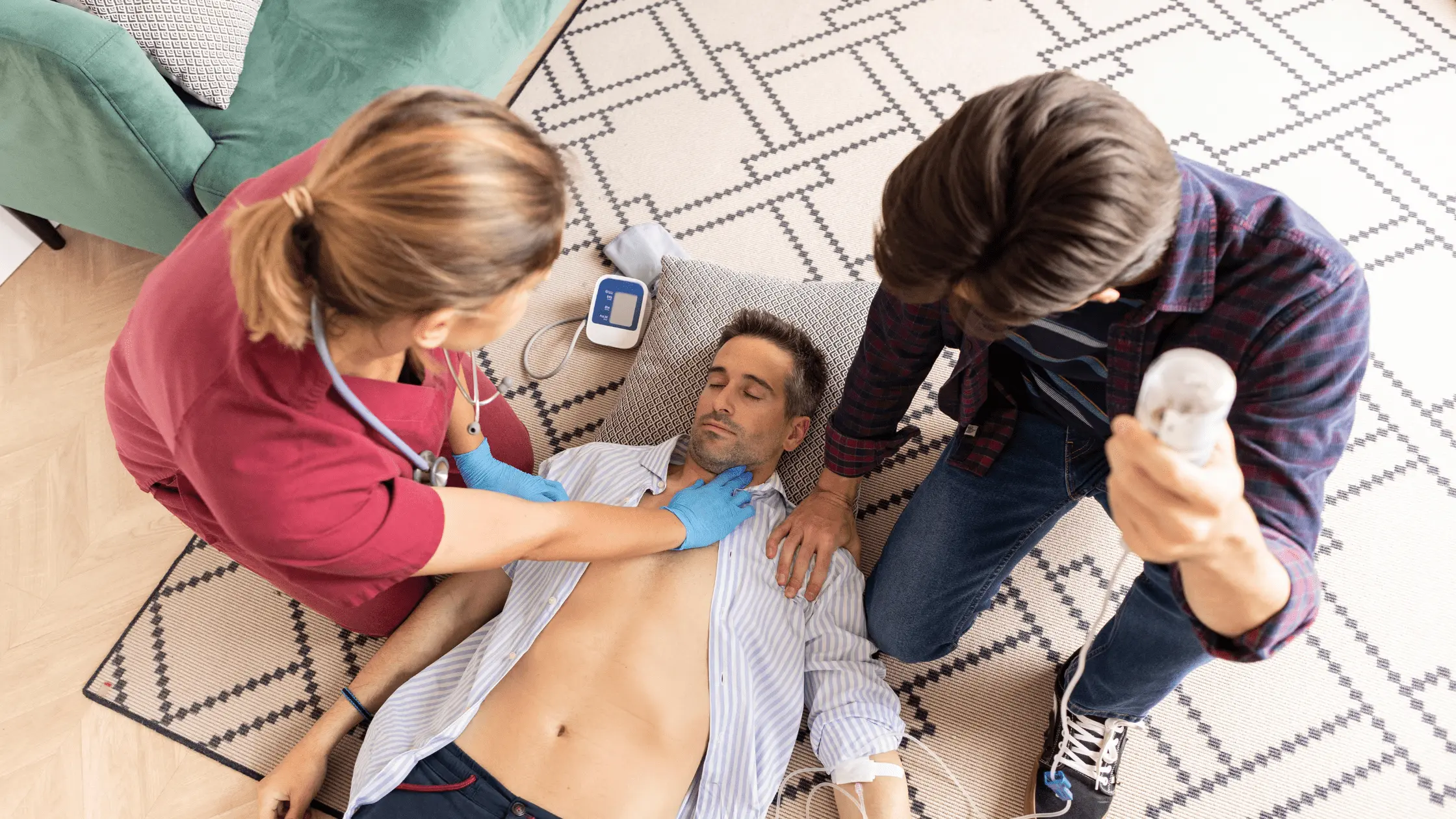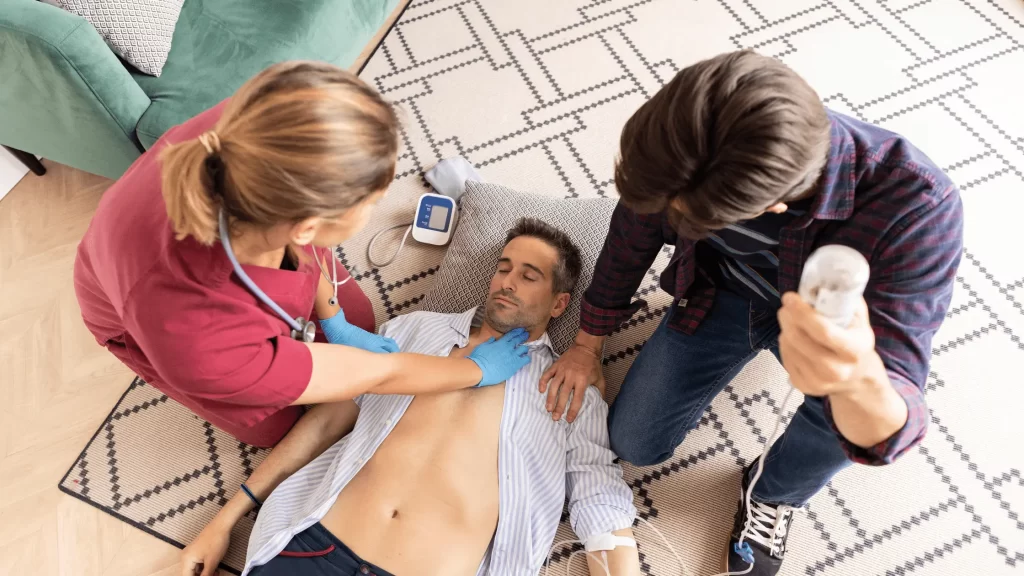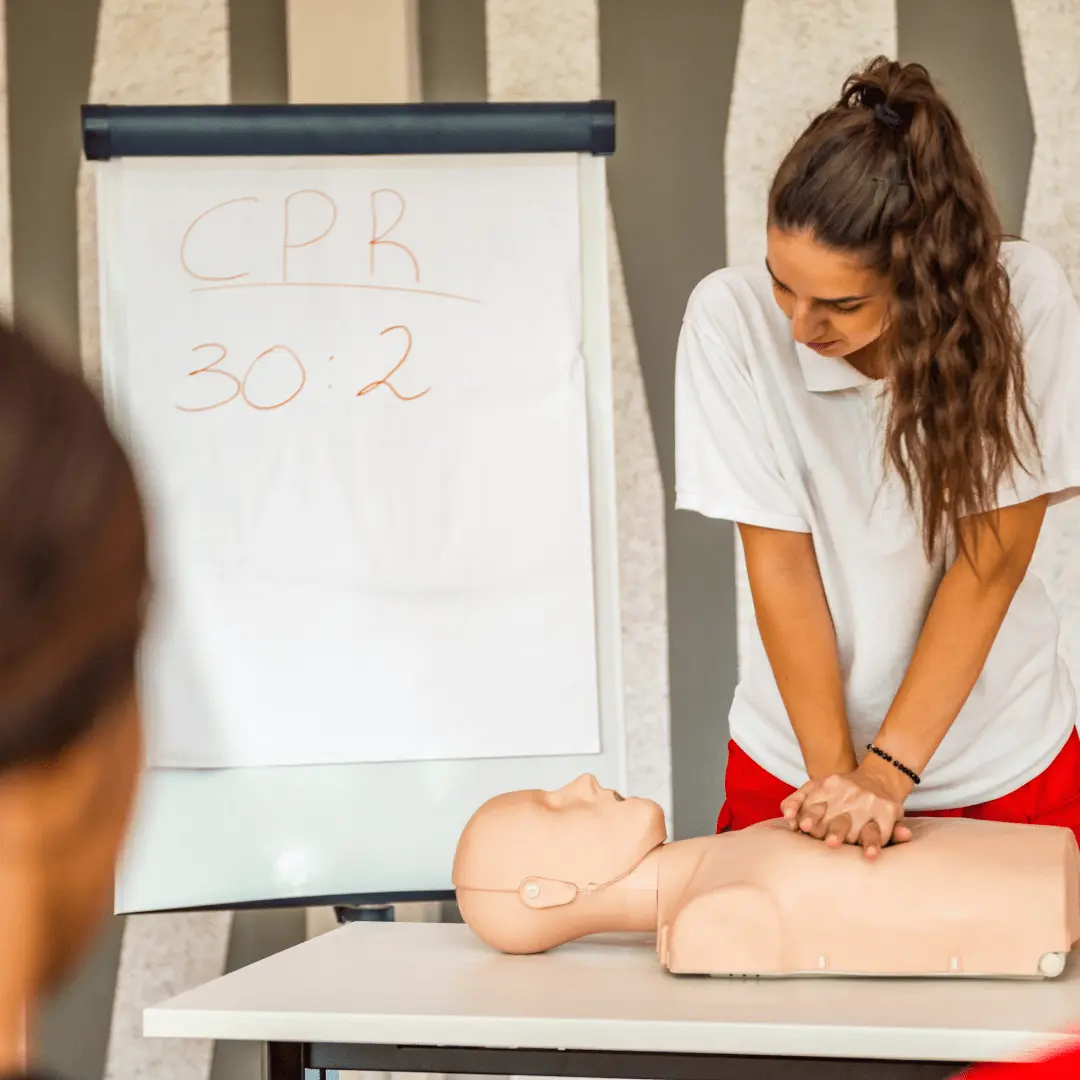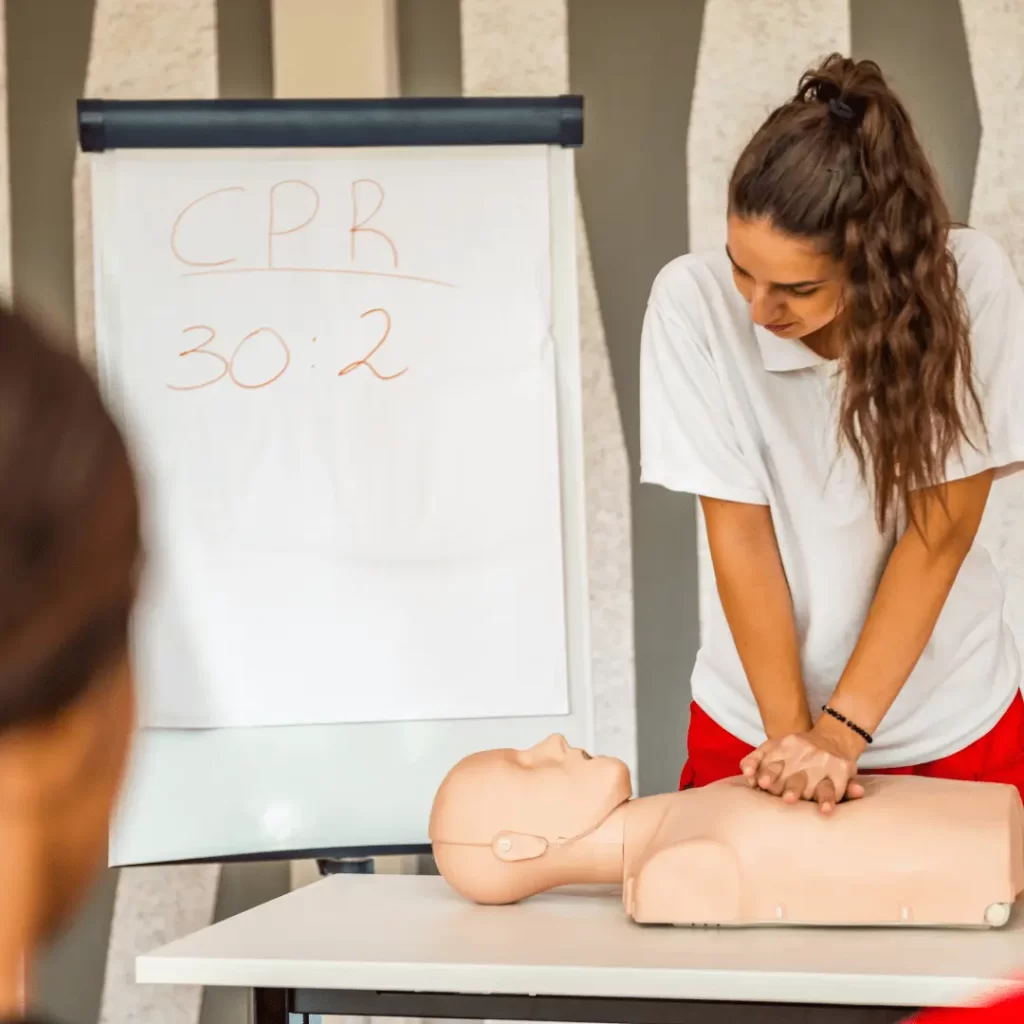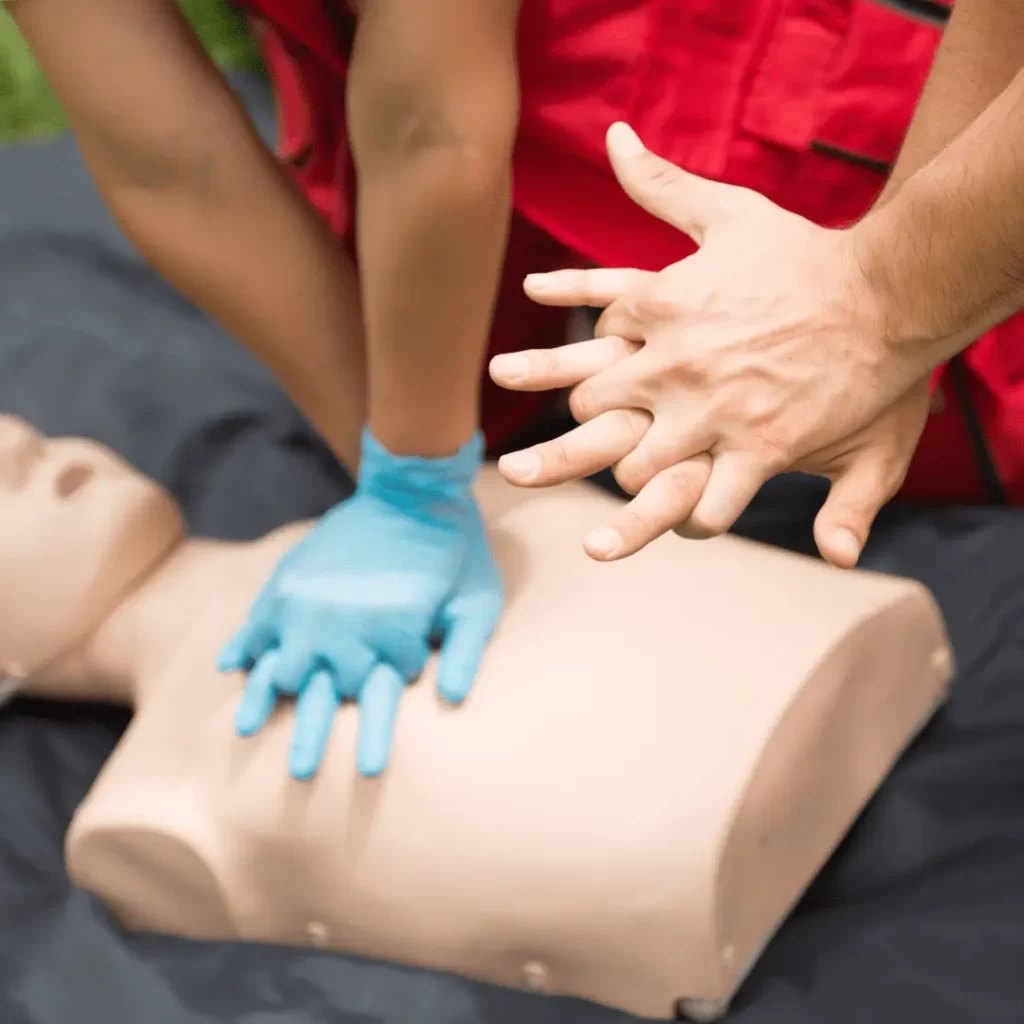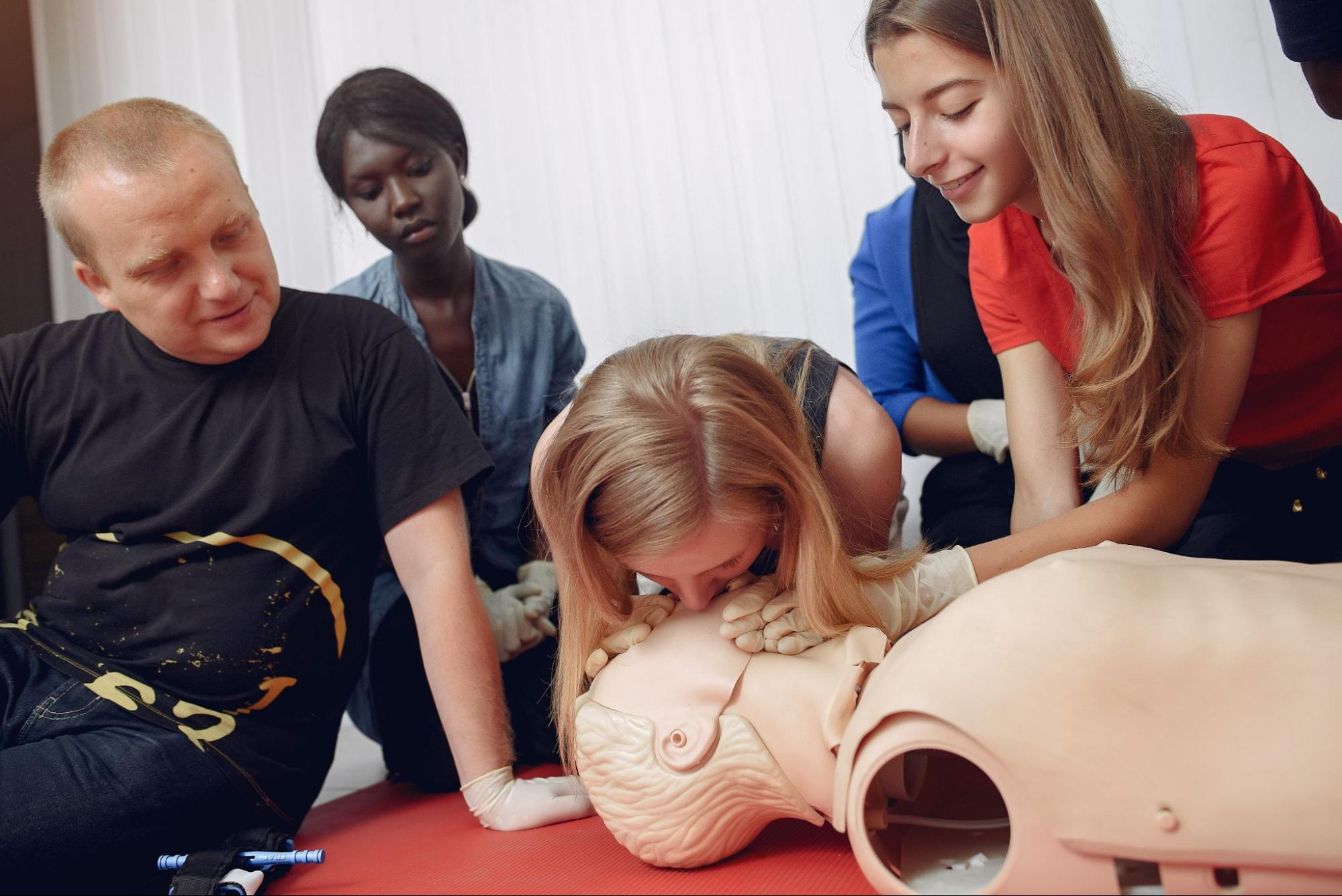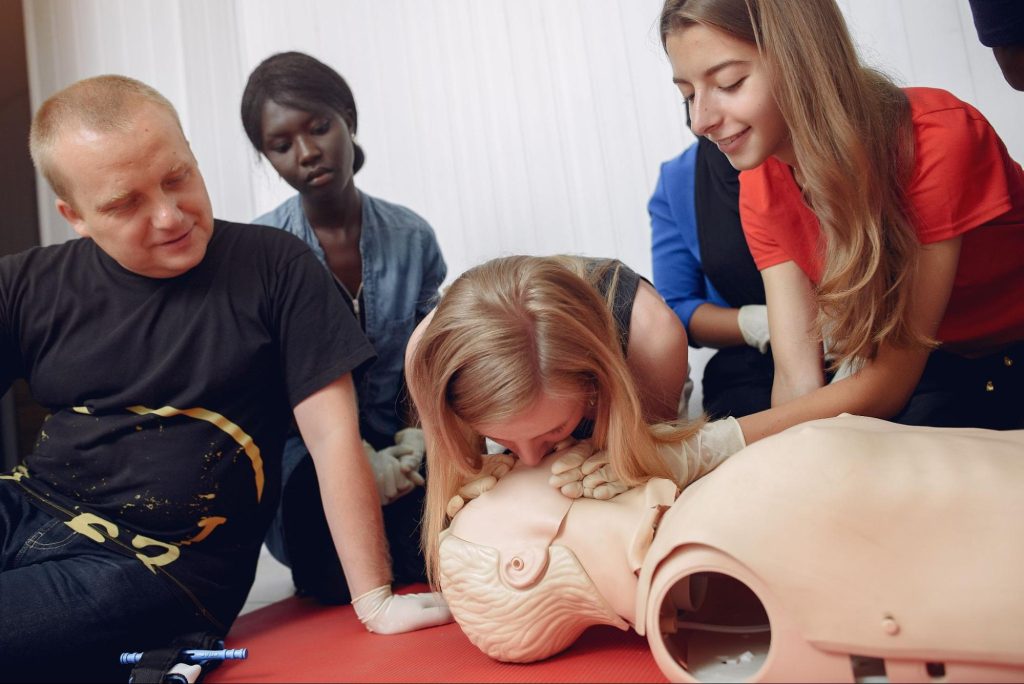Why You Should Take a CPR Class: The Power to Save a Life in Your Hands
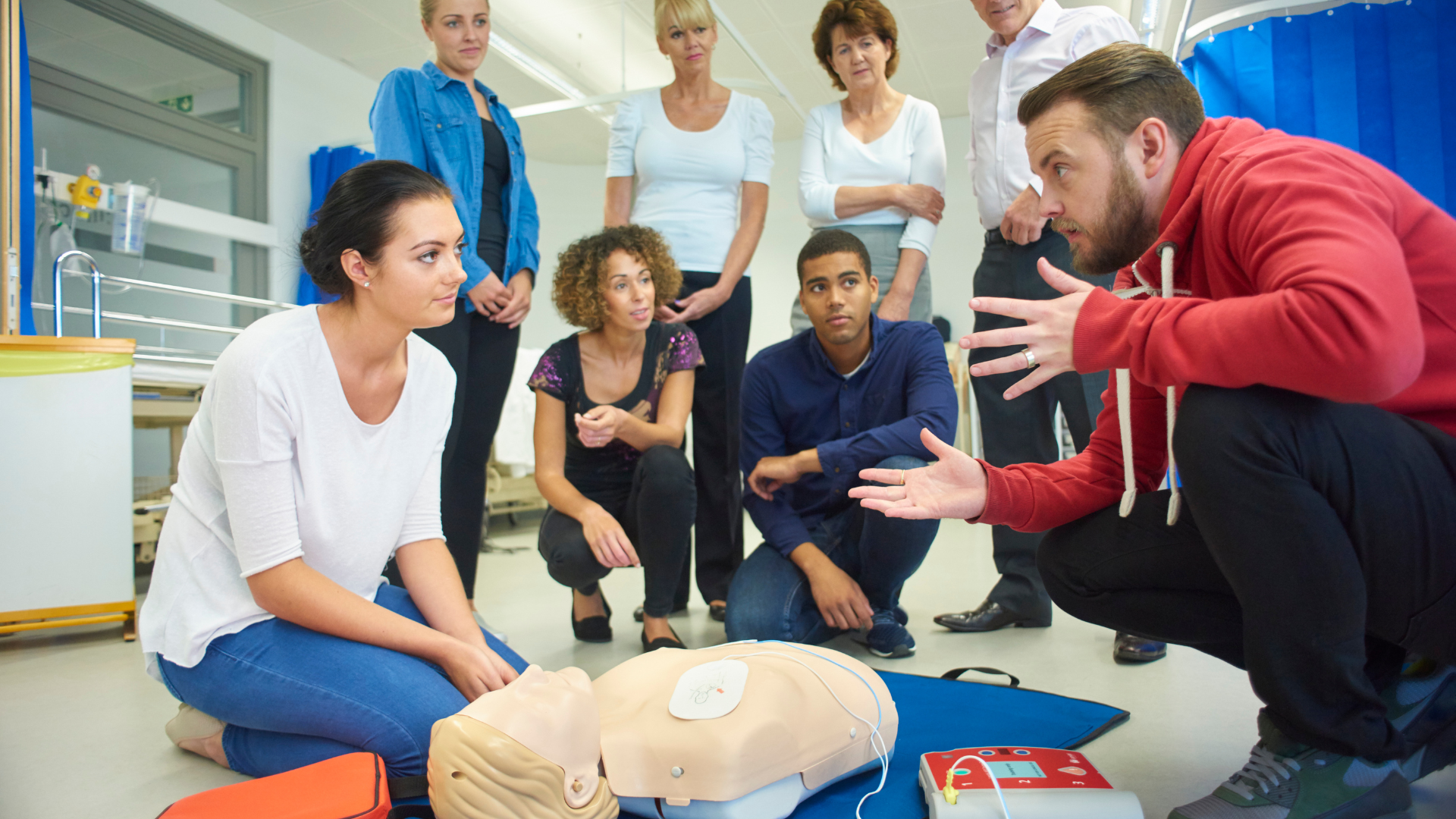
Why You Should Take a CPR Class: The Power to Save a Life in Your Hands
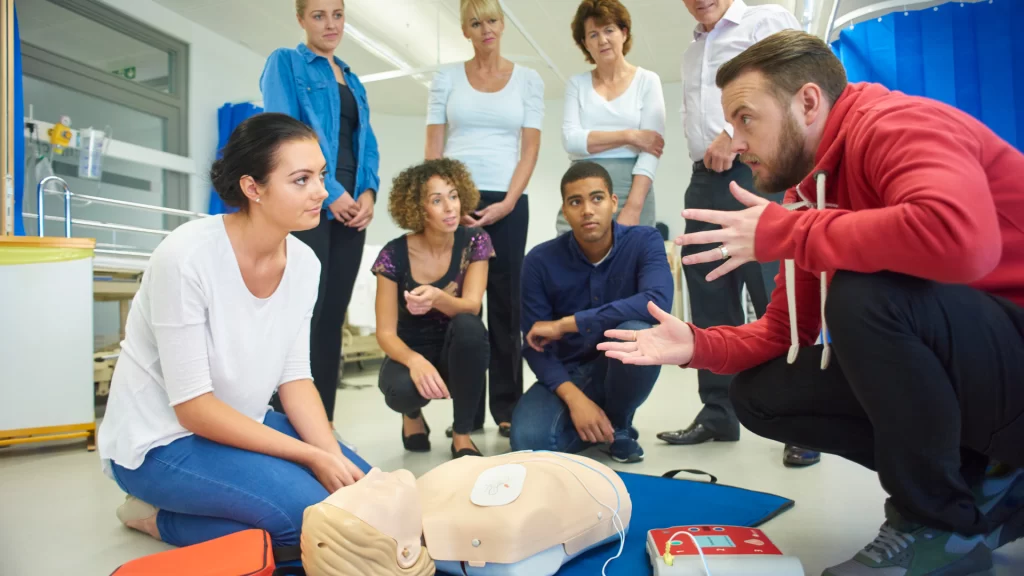
Have you ever been in a situation where you witnessed someone collapse? The frantic rush of adrenaline, the confusion, the fear – it’s a terrifying experience. But what if, in that moment of panic, you had the knowledge and skills to potentially save their life?
This is the power of CPR (Cardiopulmonary Resuscitation) training. It’s not just for medical professionals – CPR equips everyday people with the ability to become heroes in a crisis. Imagine the difference you could make by knowing how to react swiftly and effectively in a cardiac arrest situation.
This article dives deep into the reasons why CPR training is an essential skill for everyone. We’ll explore the benefits, the different types of CPR classes available, and how to find the right training for you. By the end, you’ll be armed with the knowledge and confidence to take action and potentially become a lifesaver.
Be a Hero in Everyday Emergencies
Cardiac arrest can strike anyone, anytime, anywhere. It doesn’t discriminate based on age, fitness level, or prior health conditions. According to the American Heart Association, around 350,000 out-of-hospital cardiac arrests occur in the United States annually. With such a high incidence, the possibility of encountering someone experiencing cardiac arrest is significant.
By taking a CPR class, you equip yourself with the knowledge and skills to become a lifesaver. You’ll learn how to recognize the signs and symptoms of cardiac arrest, which include sudden collapse, unresponsiveness, and abnormal breathing. This awareness allows you to react swiftly and initiate CPR promptly.
The Crucial First Minutes: Why Early Intervention Matters
The effectiveness of CPR hinges on immediate action. Brain cells begin to die within minutes of oxygen deprivation during cardiac arrest. Studies show that the chance of survival decreases by 7-10% with each passing minute without CPR.
However, CPR can significantly improve the odds. Effective CPR can maintain minimal blood flow to vital organs, particularly the brain, extending the window of opportunity for successful resuscitation by medical professionals. The sooner CPR is initiated, the higher the chances of the victim making a full recovery.
The Science Behind CPR: How It Works
CPR combines two lifesaving techniques: chest compressions and rescue breaths. Chest compressions mimic the pumping action of the heart, manually circulating oxygenated blood throughout the body. Rescue breaths provide oxygen to the lungs, keeping them inflated and facilitating gas exchange.
A CPR class will equip you with the proper hand placement and compression depth and rate for effective chest compressions. You’ll also learn how to administer rescue breaths using a barrier device or mouth-to-mouth resuscitation techniques, ensuring proper hygiene and minimizing risk.
More Than Just Techniques: Gaining Confidence in Emergencies
CPR training goes beyond memorizing steps. A good CPR class will also focus on building your confidence in responding to emergencies. Through hands-on practice with CPR mannequins and simulated scenarios, you’ll gain the practical experience and composure needed to act effectively in a real-life situation.
You’ll also learn how to activate the emergency medical services (EMS) and how to use an Automated External Defibrillator (AED), a portable device that delivers an electrical shock to restore a normal heart rhythm. Having this comprehensive knowledge empowers you to take control in a crisis and provide the best possible care until help arrives.
CPR Training: Benefits Beyond Saving Lives
While the primary benefit of CPR training is the potential to save a life, the positive impacts extend far beyond that. Here are some additional reasons why taking a CPR class is a worthwhile investment:
- Peace of mind: Knowing CPR equips you with the confidence to handle emergencies involving cardiac arrest. This sense of preparedness reduces anxiety and allows you to stay calm and collected in a crisis.
- Increased employability: CPR certification is often a valuable asset for various job applications, particularly in fields like healthcare, fitness, education, and childcare.
Empowering your community: By being CPR-trained, you become a valuable resource in your community. You can contribute to a safer environment and potentially save the life of a friend, family member, or even a stranger.
Who Should Take a CPR Class?
The answer is simple: everyone. CPR training is a valuable skill for people of all ages and backgrounds. Here are some specific groups who can significantly benefit from CPR training:
- Parents and caregivers of young children: Cardiac arrest can occur in children as well. Being CPR-trained empowers parents and caregivers to respond effectively in case of a pediatric emergency.
- Teachers and school staff: Schools are environments where many children gather. Equipping teachers and staff with CPR skills ensures a safer learning environment.
- Coaches and fitness professionals: Gyms and athletic facilities are high-activity zones where the risk of cardiac events might be slightly higher. CPR-trained coaches and trainers can provide immediate assistance in case of a sudden cardiac arrest during exercise.
- Workplace safety personnel: Many workplaces have designated safety personnel who are responsible for emergency preparedness. CPR training equips them with the skills to respond effectively to medical emergencies at work.
- Babysitters and nannies: Those entrusted with childcare should be CPR-trained. This empowers them to handle emergencies involving infants and children effectively.
- Law enforcement officers and first responders: While these professionals receive extensive emergency response training, CPR certification ensures they possess the core lifesaving skills for immediate intervention.
Anyone who wants to be prepared: Ultimately, CPR training is valuable for anyone who wants to be prepared to act in an emergency situation. Regardless of your profession or background, having this skill allows you to potentially save a life.
Finding the Right CPR Class for You
Now that you understand the importance of CPR training, you might be wondering where to get started. Here’s a guide to finding the right CPR class for your needs:
- Types of CPR Classes: There are various CPR class options available, catering to different experience levels and needs. Here are the most common ones:
- -Basic Life Support (BLS): This is the most common type of CPR class, ideal for lay rescuers and the general public. It covers CPR for adults, children, and infants, along with the use of AEDs.
- -Heartsaver CPR: This is a shorter and more streamlined version of the BLS course, focusing on the core CPR skills for adults.
- -Advanced Cardiac Life Support (ACLS): This is a more comprehensive course designed for healthcare professionals like doctors, nurses, and paramedics. It delves deeper into advanced cardiac resuscitation techniques and medication use.
- Certification: Most CPR classes culminate in a certification exam. Upon successful completion, you’ll receive a CPR certification card that typically remains valid for two years. Look for classes that are certified by reputable organizations like the American Heart Association (AHA) or the American Red Cross.
- Choosing a Class Provider: Numerous organizations offer CPR classes, including hospitals, community centers, fire departments, and private training companies. Consider factors like location, class schedule, instructor qualifications, and cost when choosing a provider.
- Online CPR Courses: While not as comprehensive as in-person classes, online CPR courses can be a convenient option for those with busy schedules. However, in-person classes offer the benefit of hands-on practice and instructor feedback, which are crucial for building CPR competency.
Renewal and Ongoing Training
CPR skills can deteriorate over time without practice. To maintain proficiency and ensure your certification remains valid, plan to renew your CPR certification every two years. Most CPR providers offer renewal courses specifically designed to refresh your knowledge and practice essential CPR techniques.
Conclusion
CPR training is an empowering and potentially life-saving skill. By taking a CPR class, you gain the knowledge and confidence to respond effectively in a cardiac arrest situation. Remember, early intervention is crucial. The skills you learn in a CPR class can make a world of difference when it matters most.
Empower yourself, empower your community – book your CPR class today!
AHA BLS CPR & AED Classes
About Author:
admin
Recent Posts
- Top Industries in Denver, CO That Require CPR Certification
- Stay Certified: CPR for Personal Trainers & Coaches in Denver
- Infant CPR Training for Babysitters and Nannies in Denver, CO
- The Importance of CPR and AED Training in Denver, CO Workplaces
- Why Every Parent in Denver, CO Should Take an Infant & Child CPR Class

